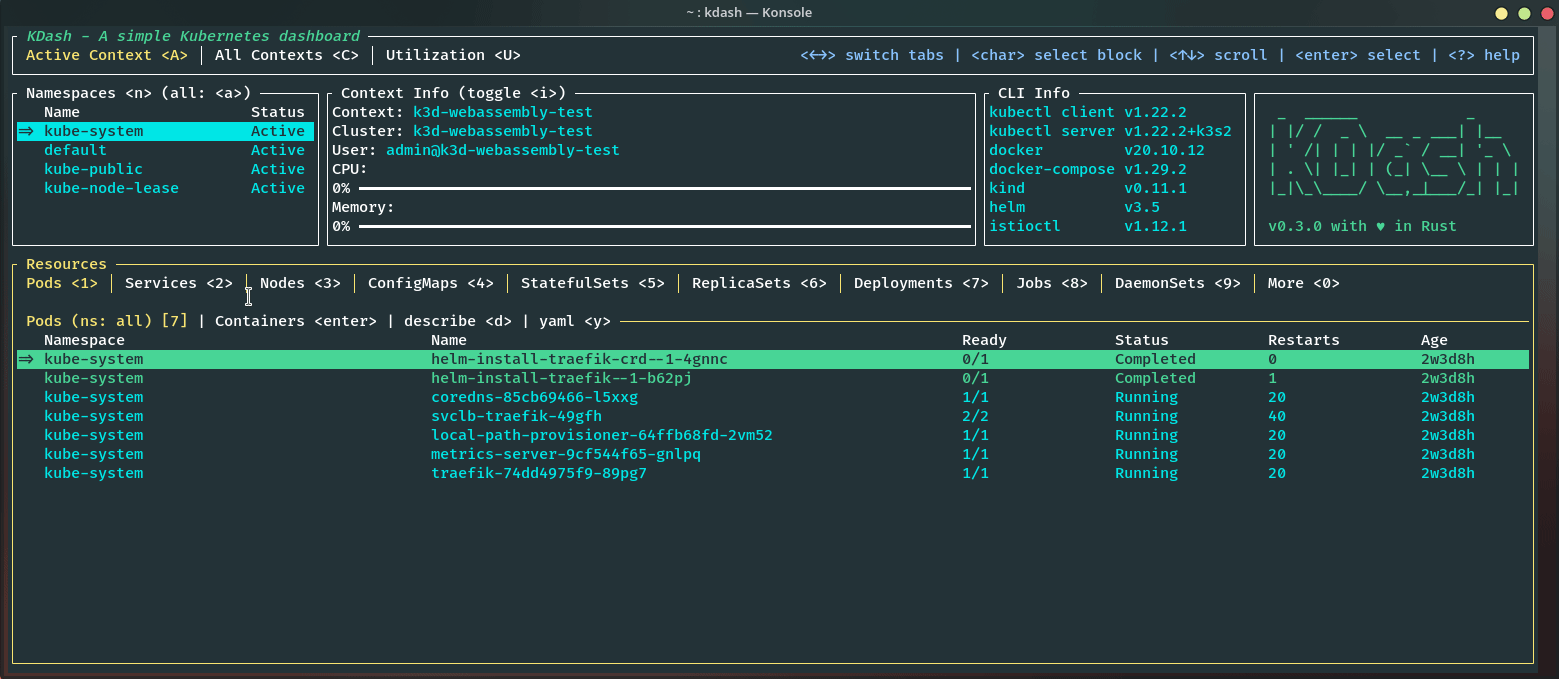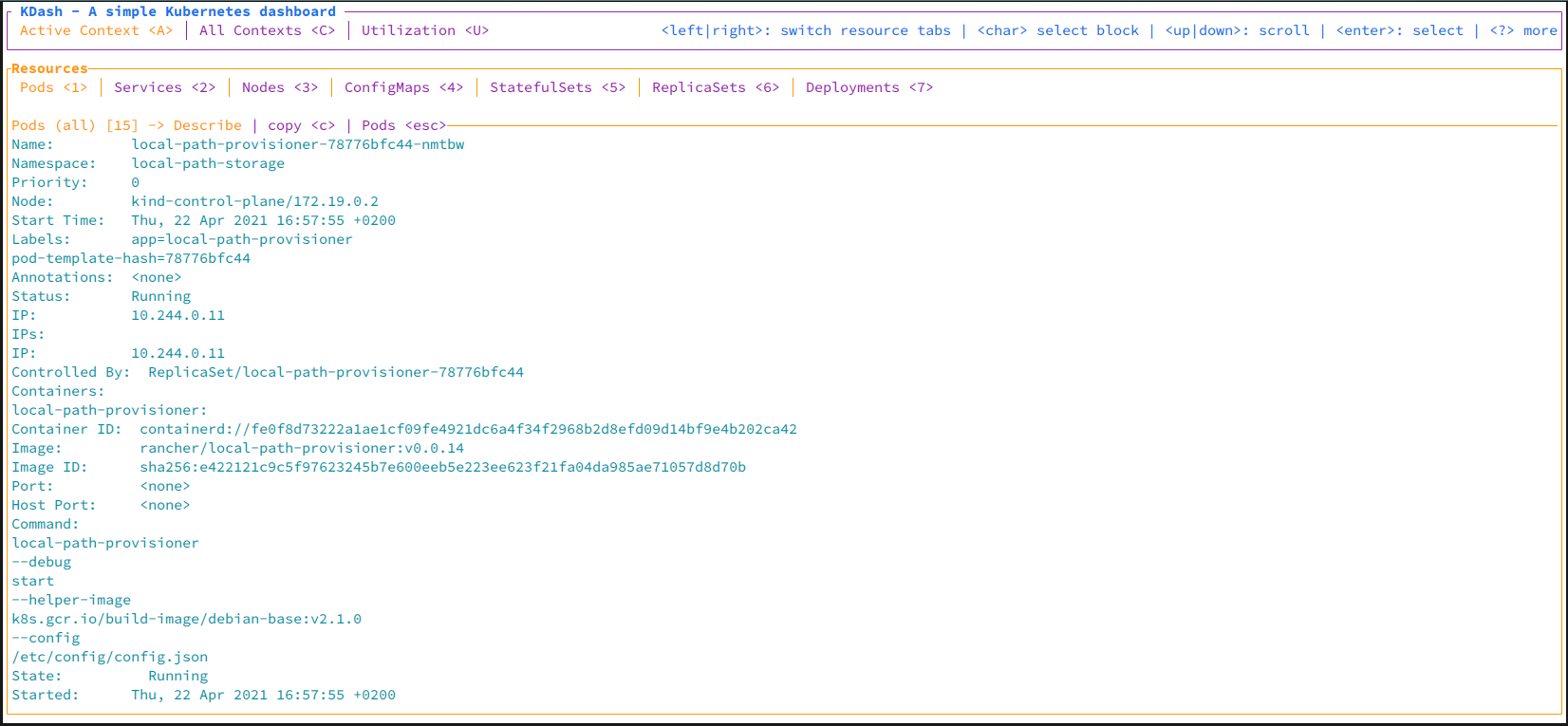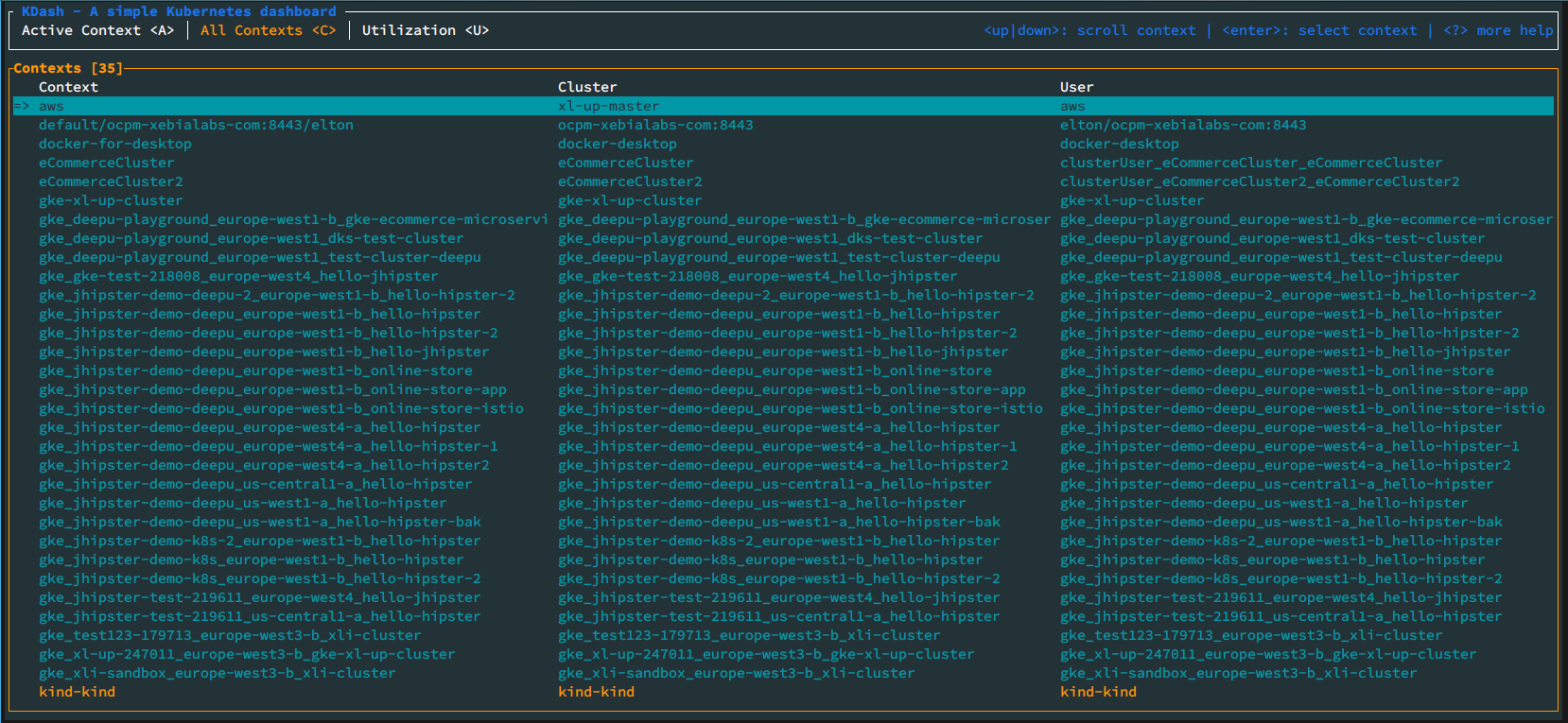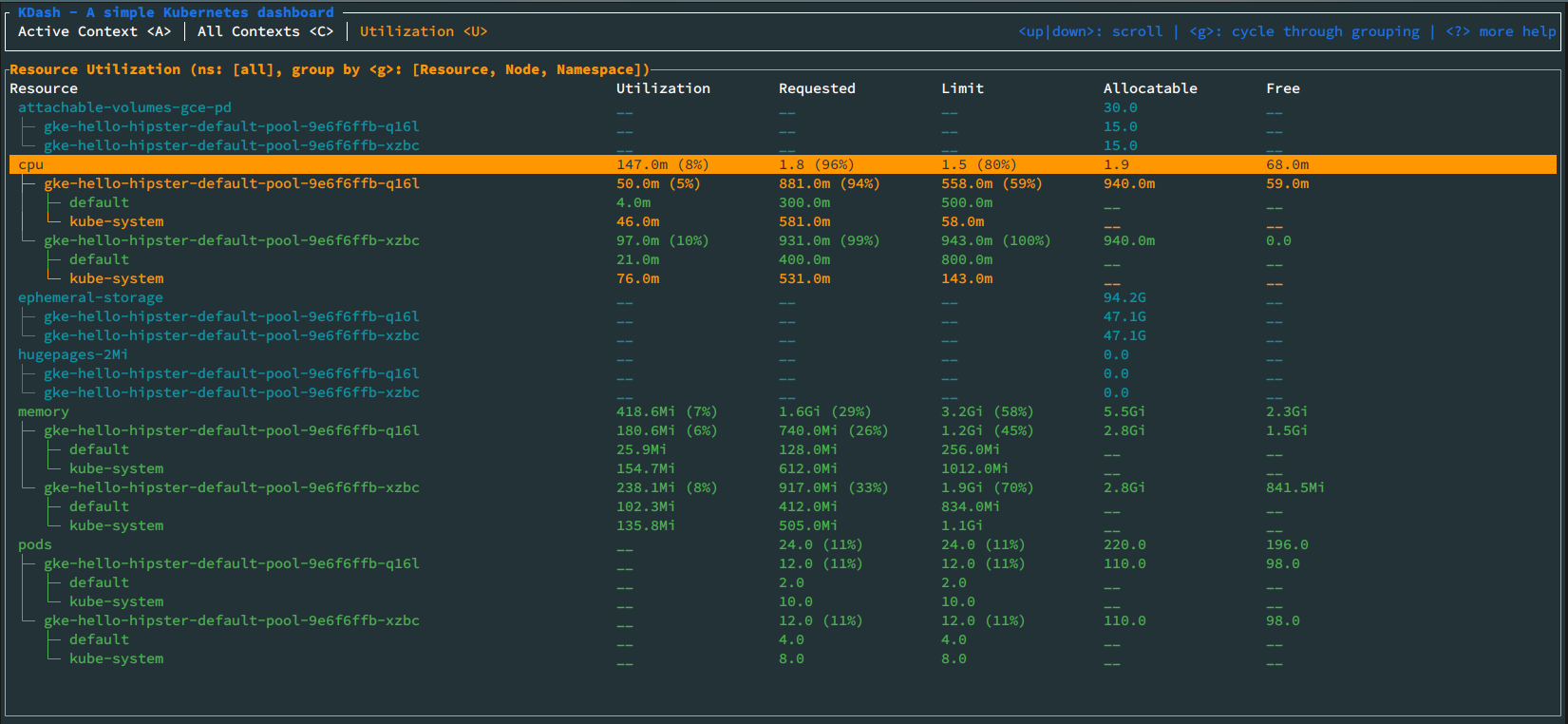A simple terminal dashboard for Kubernetes built with Rust
brew tap kdash-rs/kdash
brew install kdash
# If you need to be more specific, use:
brew install kdash-rs/kdash/kdashTo upgrade
brew upgrade kdashscoop bucket add kdash-bucket https://github.com/kdash-rs/scoop-kdash
scoop install kdashChoco package located here. Since validation of the package takes forever, it may take a long while to become available after a release. I would recommend using Scoop instead for Windows.
choco install kdash
# Version number may be required for newer releases, if available:
choco install kdash --version=0.2.7To upgrade
choco upgrade kdash --version=0.2.7Run the below command to install the latest binary. Run with sudo if you don't have write access to /usr/local/bin. Else the script will install to current directory
curl https://raw.githubusercontent.com/kdash-rs/kdash/main/deployment/getLatest.sh | bashBinaries for macOS, Linux and Windows are available on the releases page
- Download the latest binary for your OS.
- For Linux/macOS:
cdto the file you just downloaded and runtar -C /usr/local/bin -xzf downloaded-file-name. Use sudo if required.- Run with
kdash
- For Windows:
- Use 7-Zip or TarTool to unpack the tar file.
- Run the executable file
kdash.exe
Run KDash as a Docker container by mounting your KUBECONFIG. For example the below for default path
docker run --rm -it -v ~/.kube/config:/root/.kube/config deepu105/kdashYou can also clone this repo and run make docker to build a docker image locally and run it using above command
Note: This may not work properly if you run Kubernetes locally using Minikube or Kind
If you have Cargo installed then you install KDash from crates.io
cargo install kdashNote: On Debian/Ubuntu you might need to install
libxcb-xfixes0-devandlibxcb-shape0-dev. On Fedoralibxcbandlibxcb-develwould be needed.
Note: On Linux you might need to have package
xorg-dev(Debian/Ubuntu) orxorg-x11-server-devel(Fedora) or equivalent installed for the copy to clipboard features to work
Note: If you are getting compilation error from openSSL. Make sure perl and perl-core are installed for your OS.
You can also clone the repo and run cargo run or make to build and run the app
kdashPress ? while running the app to see keybindings
-h, --help: Prints help information-V, --version: Prints version information-t, --tick-rate <tick-rate>: Set the tick rate (milliseconds): the lower the number the higher the FPS.-p, --poll-rate <poll-rate>: Set the network call polling rate (milliseconds, should be multiples of tick-rate): the lower the number the higher the network calls.
- [Windows] KDash looks better on CMD since Powershell's default theme makes the colours look weird.
- [Windows] If using k3d for local clusters, set the server URL to 127.0.0.1 as 0.0.0.0 doesn't work with kube-rs. You can use
k3d cluster create --api-port 127.0.0.1:6550or change thecluster.servervalue in your.kube/configfor the k3d cluster to127.0.0.1:<port>
- CLI Info
- Node metrics
- Resource Watch (configurable polling interval with
-pflag) - Describe resources & copy output
- Get YAML for resources & copy output
- Stream container logs
- Context
- Context info
- Context watch
- Change namespace
- Context switch
- Resources utilizations for nodes, pods and namespaces based on metrics server. Requires metrics-server to be deployed on the cluster.
- Dark/Light themes
K9S is a beast compared to this as it offers way more features including CRUD actions.
KDash only offers a view of most used resources with a focus on speed and UX. Really, if something is slow or have bad UX then please raise a bug. Hence the UI/UX is designed to be more user friendly and easier to navigate with contextual help everywhere and a tab system to switch between different resources easily.
At least for now there are no plans to add full CRUD for resources but we will add more resources and more useful actions
MIT














